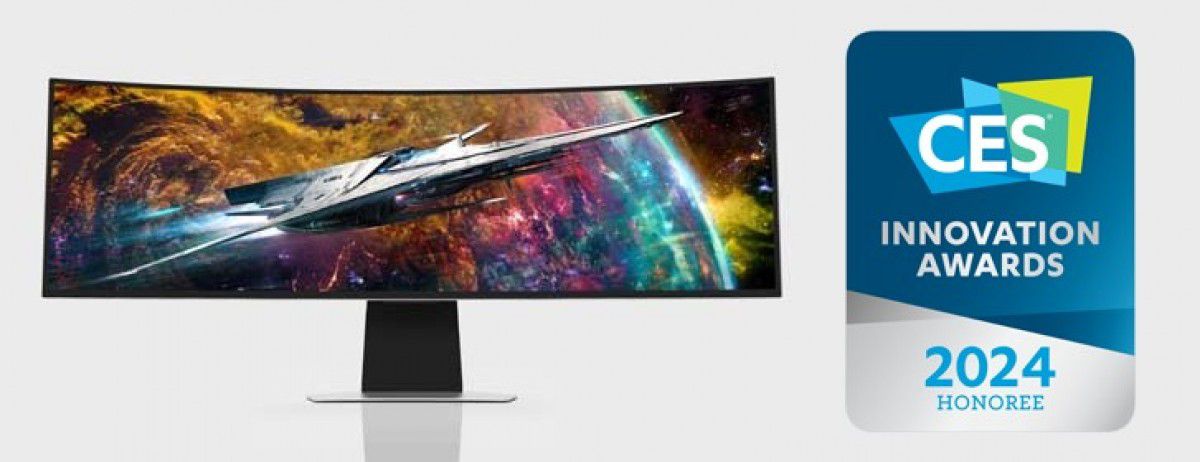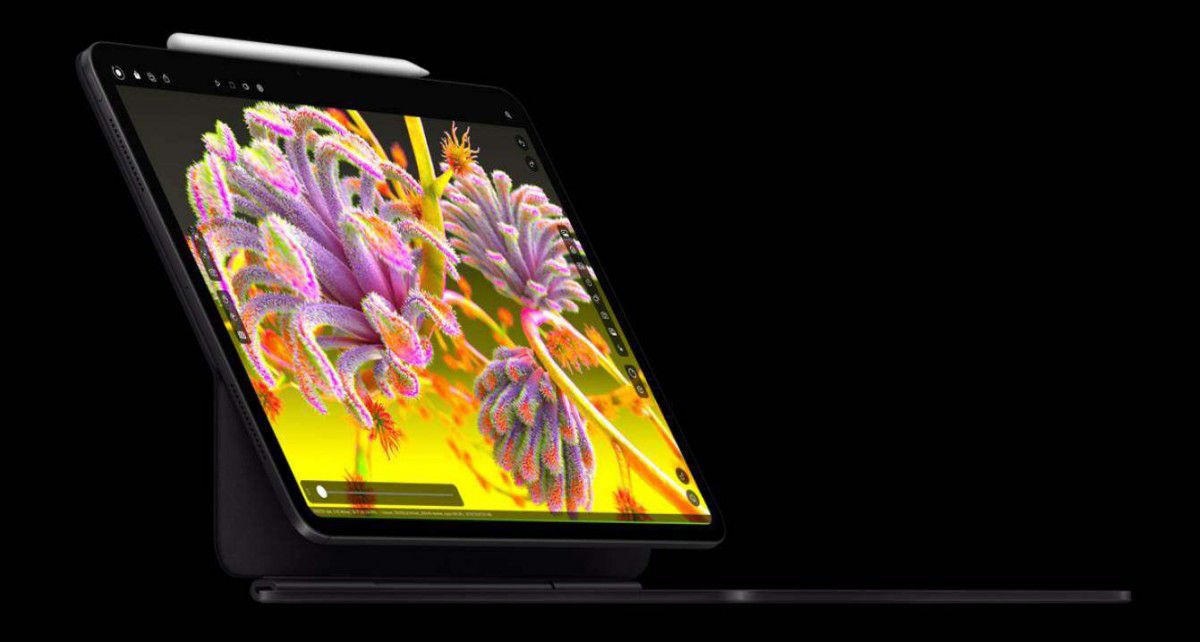Highlights
- Samsung secures a 34.7% revenue share in the global OLED monitor market.
- Apple projects sales of 4.5-5 million OLED iPad Pros this year.
- Samsung’s Odyssey G95SD wins at CES 2024 for OLED monitor innovation.
- Apple employs tandem OLED technology for increased brightness in new iPad Pros.
Samsung Electronics has rapidly risen to become the global leader in OLED monitor sales just one year after entering the market.
“The OLED monitor market is highly competitive, so reaching the top spot requires unparalleled innovation and product quality,” said Hoon Chung, Executive Vice President of Visual Display Business at Samsung Electronics. “This achievement speaks to our drive for excellence and understanding of consumer needs, the key factors in producing outstanding OLED monitors for performance-demanding gamers around the globe.”
“The Samsung OLED difference lies in our ability to combine brilliant visuals that bring game scenes to life and superior performance with ultra-fast refresh rates for smooth, responsive gameplay,” said David Phelps, Head of the Display Division, Samsung Electronics America. “With the revolutionary, immersive gaming experience of our growing Odyssey product line, we continue to lead the market as the top choice for OLED gaming monitors among industry experts and gamers alike.”
“AMOLED screens have long been celebrated for their high contrast and vivid colors,” says TrendForce. “Yet, performance and lifespan issues, especially with larger IT product sizes, have raised concerns about increased power consumption. To address these challenges, efforts have been made to enhance AMOLED’s performance and durability: Firstly, the development of new materials, particularly blue light-emitting materials. Traditionally, blue light-emitting has been limited by low efficiency and stability, which has restricted further advancements in AMOLED applications. With new material developments and the upcoming commercialization of blue phosphorescent materials, there is a significant potential for enhancing overall performance.”
Samsung a Top OLED Manufacturer

According to data from research firm IDC, the South Korean tech giant captured an impressive 34.7 percent share of OLED monitor sales revenue and 28.3 percent of shipments worldwide in 2023.
Samsung has revealed some of the company’s latest OLED monitor innovations that it came up with at CES 2024, including the award-winning curved 49-inch Odyssey G95SD and new flat panel G80SD and G60SD models.
Both models have been responsible in part for the strong sales.

The company held onto the long dominance of the gaming monitor segment, leading the market for the 5th consecutive year with a 20.8 percent revenue share in Q4 2023.
While Samsung celebrates successes in OLED displays, its rival, Apple, will reportedly sell some 4.5-5 million OLED iPad Pros this year, according to forecasts from TrendForce.

This is the forecasted volume for the 11-inch and 13-inch OLED iPads, which is lower than Apple managed to do with previous LCD and mini-LED versions of the iPads.
Apple OLED iPad Pros To Be a Hit

In general, though, TrendForce sees the overall OLED tablet market reaching some 9 million units in 2024, or around 7% of worldwide tablet shipments.
For the latest iPad Pros, Apple has used enhanced “tandem” OLED panel technology, which allows for the stacking of two OLED layers together to help drive brightness as high as 1,600 nits in HDR.

Tandem OLEDs are seen by analysts as an important interim step to improving performance and longevity as future innovations can take OLED material and efficiency to the next level.
In addition to Apple’s tandem RGB OLED approach, some manufacturers are exploring WOLED displays with vertically stacked blue, yellow and green OLED layers.

Other features of the OLED iPad Pro is that it is powered by the new M4 chipset.
Despite all of this, the 13-inch version of the device actually just measures 5.1mm in thickness.
FAQs
What market share does Samsung hold in the global OLED monitor sales?
Samsung has captured 34.7 percent of the revenue share in the global OLED monitor market, demonstrating strong performance and leadership within just a year of market entry.
How many OLED iPad Pros does Apple expect to sell, and how does this compare to previous versions?
Apple is forecasted to sell between 4.5 to 5 million OLED iPad Pros this year. This figure is somewhat lower than the sales achieved by earlier models with LCD and mini-LED screens.
What new technologies did Samsung showcase at CES 2024?
At CES 2024, Samsung introduced several new OLED monitors, including the curved 49-inch Odyssey G95SD, along with the G80SD and G60SD models, highlighting their continued innovation in the OLED segment.
What is tandem OLED technology, and how is Apple utilizing it?
Tandem OLED technology involves stacking two OLED layers to enhance screen brightness, which Apple has incorporated into its latest iPad Pros allowing them to achieve up to 1,600 nits in HDR.
Has Samsung Electronics been Named No.1 in Global OLED Monitor Market ?
Samsung Electronics Co., Ltd., a global leader in the display industry, has secured the top position in global sales of OLED monitors just one year after launching its first OLED model — the 34″ Odyssey OLED G8 (G85SB model), a gaming monitor.
According to the International Data Corporation (IDC), Samsung Electronics has taken the top position in the global OLED monitor market by capturing 34.7% of market share based on total revenue, and the top position in market share based on sales volume with 28.3% of OLED monitors sold in 2023.
Samsung has also maintained its leadership in the overall global gaming monitor market for the fifth consecutive year, recording a market share of 20.8% in terms of total revenue.
Since entering the OLED market, Samsung has continued to innovate and receive praise for new monitors, including the Odyssey OLED G9 (G95SC model), which received widespread acclaim from experts and reviewers worldwide.
Samsung will continue to diversify its gaming monitor lineup by introducing new Odyssey OLED models, each of which will leverage Samsung’s proprietary OLED technology.
This innovation follows the success of the Odyssey Neo series with Quantum Mini LED technology, as well as the Odyssey Ark, which showcased a groundbreaking interface and form factor.
What was announced by Samsung on CES 2024?
At CES 2024, Samsung announced an expansion of its OLED monitor lineup, unveiling three new products:
The Odyssey OLED G8 (G80SD model), with a 32” 4K UHD resolution, a 16:9 aspect ratio, 240Hz refresh rate and 0.03ms response time (GtG3).
The Odyssey OLED G6 (G60SD model), with a 27” QHD resolution, a 16:9 aspect ratio, 360Hz refresh rate and 0.03ms response time (GtG).
An updated Odyssey OLED G9 (G95SD model), with 49” dual QHD resolution in a 32:9 aspect ratio, a 240Hz refresh rate and 0.03ms response time (GtG) and new features.
The new OLED offerings have impressed early reviewers, and have already won awards. At CES — the most powerful tech event in the world — the Odyssey OLED G9 was named a CES® 2024 Innovation Awards Honoree.
Does AMOLED’s have a Key Role in IT Production Expansion according to TrendForce ?
AMOLED screens have long been celebrated for their high contrast and vivid colors. Yet, performance and lifespan issues, especially with larger IT product sizes, have raised concerns about increased power consumption.
To address these challenges, efforts have been made to enhance AMOLED’s performance and durability: Firstly, the development of new materials, particularly blue light-emitting materials.
Traditionally, blue light-emitting has been limited by low efficiency and stability, which has restricted further advancements in AMOLED applications.
With new material developments and the upcoming commercialization of blue phosphorescent materials, there is a significant potential for enhancing overall performance.
Secondly, the integration of low-temperature polycrystalline oxide (LTPO) technology into TFT displays has effectively controlled leakage currents and met dynamic refresh rate demands, achieving a power consumption reduction of 15–20%.
Additionally, employing tandem technology, which layers multiple light-emitting elements, halves the required current density for achieving the same brightness compared to single-layer devices, thereby at least doubling their lifespan.
Thirdly, to reduce costs and increase AMOLED market penetration, panel manufacturers are planning higher-generation production lines for more economical scale-ups.
As capacities start rolling out post-2026 with improved yields, further expansion into IT applications is expected.
What is Tandem Technology’s Expanding Role in Application Penetration ?
TrendForce notes that tandem technology offers a vital interim solution to enhance performance and longevity until material efficiency breakthroughs are achieved.
In addition to RGB AMOLED’s tandem configuration, WOLED achieves white light by vertically stacking blue, yellow, and green AMOLED light sources.
Similarly, QD OLED technology layers a blue AMOLED beneath quantum dot materials that emit red and green light, substantially boosting photoelectric conversion efficiency and brightness.
These enhancements make tandem technology suitable for a wider range of applications beyond just smartphones and television displays.
It’s also being applied in head-mounted displays and automotive smart screens, providing consumers with a superior and more varied viewing experience.
However, the manufacturing process for tandem AMOLED is complex, requiring precise control over the layering of different materials to maintain uniform optical and luminous properties.
As production scales up to the G8.7 generation, optimizing costs and improving yields will pose significant challenges.
What is Large-Generation Capacity Layout for Future Market Penetration according to TrendForce ?
Leaders in large-generation AMOLED panel line layout, such as Samsung and BOE, are planning to use thinner glass substrates combined with thin-film encapsulation to lighten the weight.
Evaporation equipment from Tokki and Sunic is expected to help achieve a substantial production scale by 2026–2027 to meet brand demands for AMOLED displays in tablets and laptops.
Supply chain partners like DNP and Poongwon Precision are also moving towards mass production of large-generation FMM.
Moreover, developments like Visionox’s mass production plans for ViP photolithography pixels and CSOT’s progress on improving yields on the G5.5 IJP-OLED line are noteworthy trends within the non-FMM camp.
TrendForce believes that the next few years will be critical in enhancing the penetration rate of AMOLED products in the IT sector, with ongoing technological advancements propelling AMOLED displays towards more sophisticated, higher-value product directions.
Also Read: Samsung Is Reportedly Making a 440MP ISOCELL HU1 Sensor: All You Need To Know
